Today is ALL the pictures of all the pretty scenery of southern Iceland. Woke up (early again) at the Hunkubakkar guesthouse to wondrous blue skies and gorgeous sunlight spilling onto the slopes and onto the sheeps dotting the slopes. Our little log cabin was comfy enough but not really cosy… log cabins aren’t really supposed to have Scandinavian austerity interior design principles imho. We were up and out early this morning with lots to see and do today.

 First stop was a quick photo opp at Fjaðrárgljúfur Canyon. The canyon is about 100m deep and 2kms long having been cut in the last Ice Age by the Fjaðrá River that flows through it.
First stop was a quick photo opp at Fjaðrárgljúfur Canyon. The canyon is about 100m deep and 2kms long having been cut in the last Ice Age by the Fjaðrá River that flows through it. It would be amazing to go walk through the canyon but alas, we have only so much time and so many things to do today.
It would be amazing to go walk through the canyon but alas, we have only so much time and so many things to do today. Unrelated, but directly adjacent to the canyon, we found the first of a bunch of ‘No Pooping’ signs on the side of the road… Why the fuck do people need to be told not to take a dump at a car park on the side of the road at the beginning of a nature hike? People suck.
Unrelated, but directly adjacent to the canyon, we found the first of a bunch of ‘No Pooping’ signs on the side of the road… Why the fuck do people need to be told not to take a dump at a car park on the side of the road at the beginning of a nature hike? People suck. We were heading back a bit to Vik this morning and with the sun out, everything looked completely different to last night in the dark and rain.
We were heading back a bit to Vik this morning and with the sun out, everything looked completely different to last night in the dark and rain.
 The gorgeous views just go on for miles – and around every corner some other truly beautiful vista greets you.
The gorgeous views just go on for miles – and around every corner some other truly beautiful vista greets you. Snow over the lava fields.
Snow over the lava fields.


Mýrdalsjökull glacier is the name given to the enormous ice cap in the south of Iceland that covers an active volcano called Katla. Katla and Mýrdalsjökull are just to the north of the township of Vik, and just easter of the much smaller icecap, Eyjafjallajökull, which erupted in 2010 causing much global havoc – particularly with airlines as half of Europe’s air fleets were grounded due to the hazards of airborne volcanic ash and jet engines. Katla is one of Iceland’s biggest immediate threats. The volcano erupts approximately every 40–80 years, however, the last eruption occurred in 1918, which means that Katla is seriously overdue. Scientists are actively monitoring the volcano, particularly after the eruption of nearby Eyjafjallajökull began in 2010. Since the year 930, 16 eruptions have been documented.
Katla is so big and such a threat that an area of glacier estimated to be 100km2 will instantly turn to flood waters causing five times as much water volume as the Amazon River to be flowing over the lowlands of Iceland. 100km2 – that’s an area larger than Manhattan (84km2). People have trouble envisaging an amount of land that big. last time Katla erupted the subsequent ash cloud affected the entire earth’s atmosphere so as to see a 3C drop in global temperatures following the eruption. When Katla does erupt there is no doubt it will be a landscape-altering event for Southern Iceland; the 1918 eruption saw the coastline extended by an entire 5 km by laharic flood deposits.
Seeing Katla is so long overdue, it seemed like the perfect time to go for a walk through an ice cave that is *under* the Katla Volcano. To do so, we arranged a guided tour to take us out through the lava fields and to the caves.
First we needed to
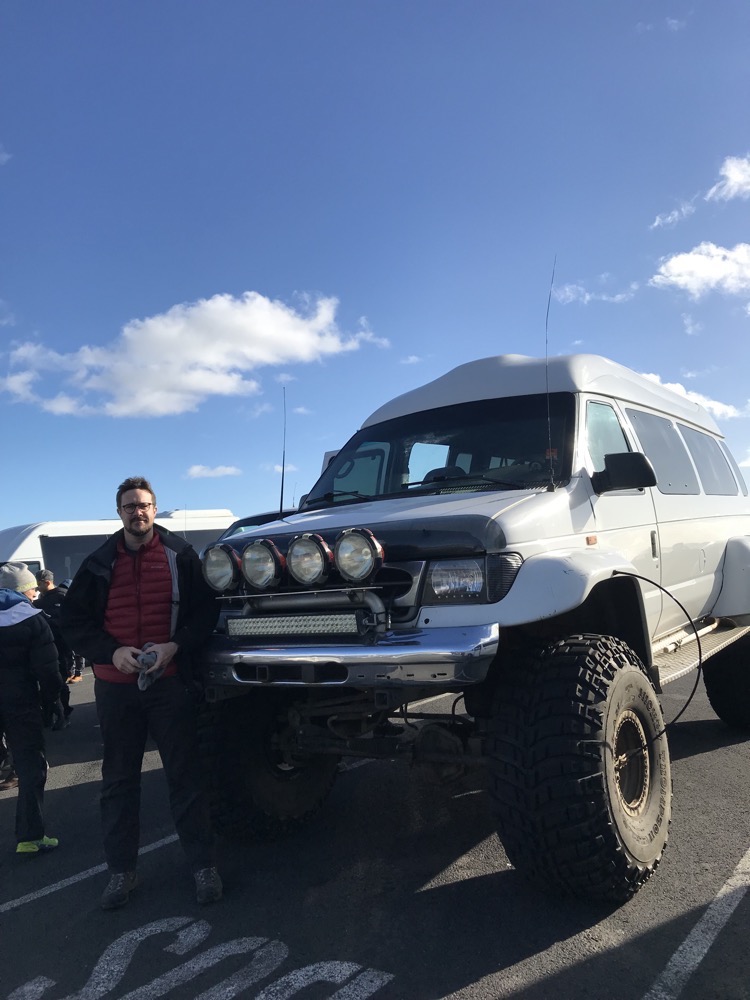

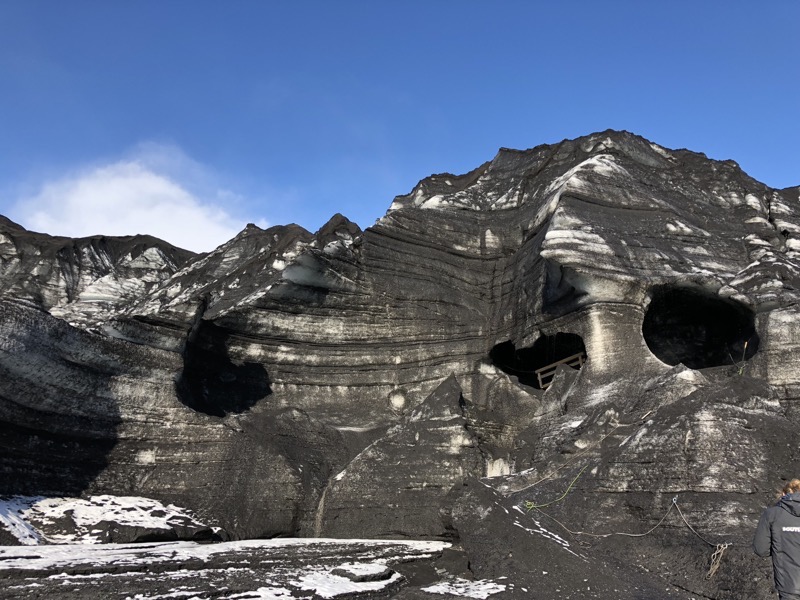 A small selling point for some – the walls of the glacier are ‘The Wall’ in the Game of Thrones tv show. Film crews came out here in the winter to film sections of the glacier wall to use as a model/basis. Stefan informed us that ‘They film these wall, and then the rest is they make in the computer.
A small selling point for some – the walls of the glacier are ‘The Wall’ in the Game of Thrones tv show. Film crews came out here in the winter to film sections of the glacier wall to use as a model/basis. Stefan informed us that ‘They film these wall, and then the rest is they make in the computer.
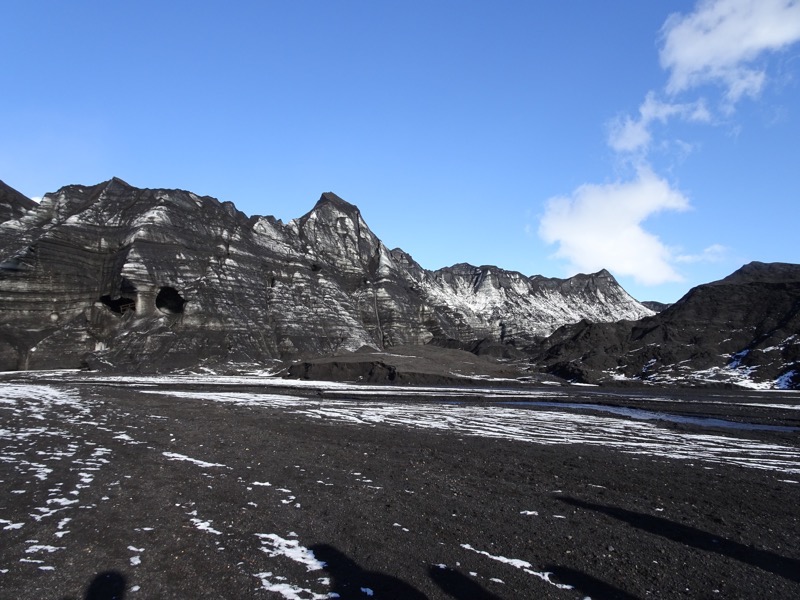

 So not sorry that there are so many pictures being added to this post – everywhere we looked was beautiful vistas, stunning ice formations and interesting light.
So not sorry that there are so many pictures being added to this post – everywhere we looked was beautiful vistas, stunning ice formations and interesting light.



 The ice caves change every year as the warmth of summer brings rapid erosion, and the frosts of winter stabilize newly formed caverns and tunnels. So every season the spaces that people can safely access are altered.
The ice caves change every year as the warmth of summer brings rapid erosion, and the frosts of winter stabilize newly formed caverns and tunnels. So every season the spaces that people can safely access are altered.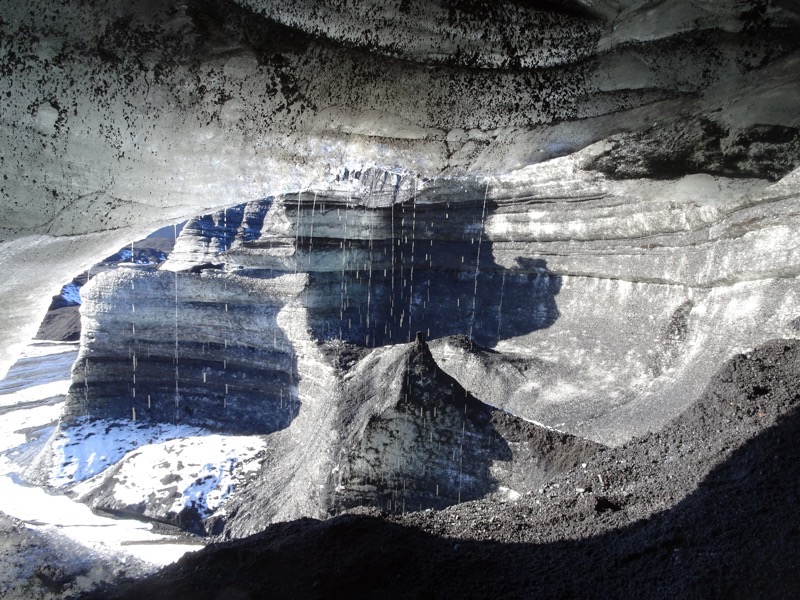


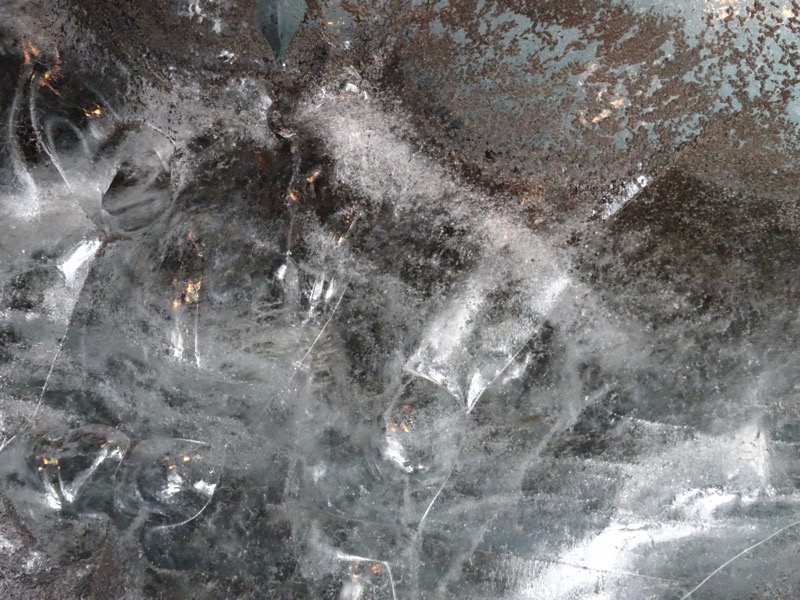
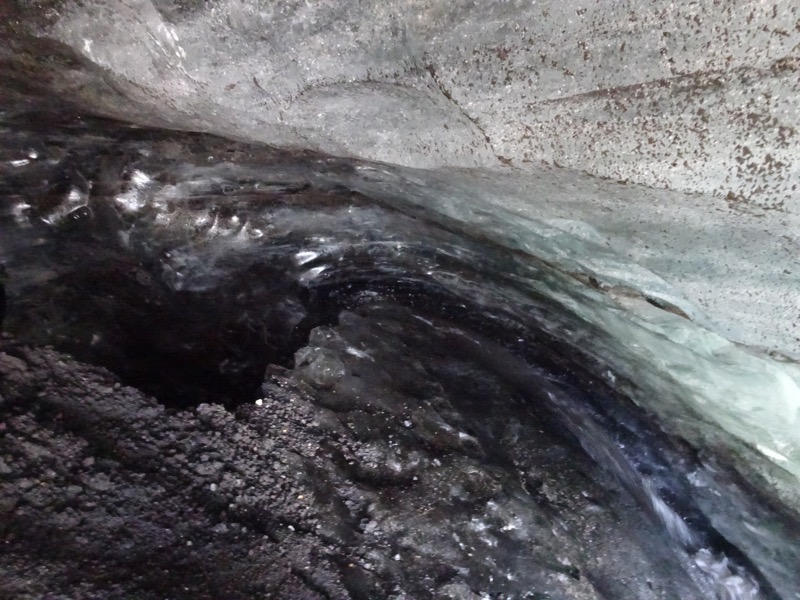
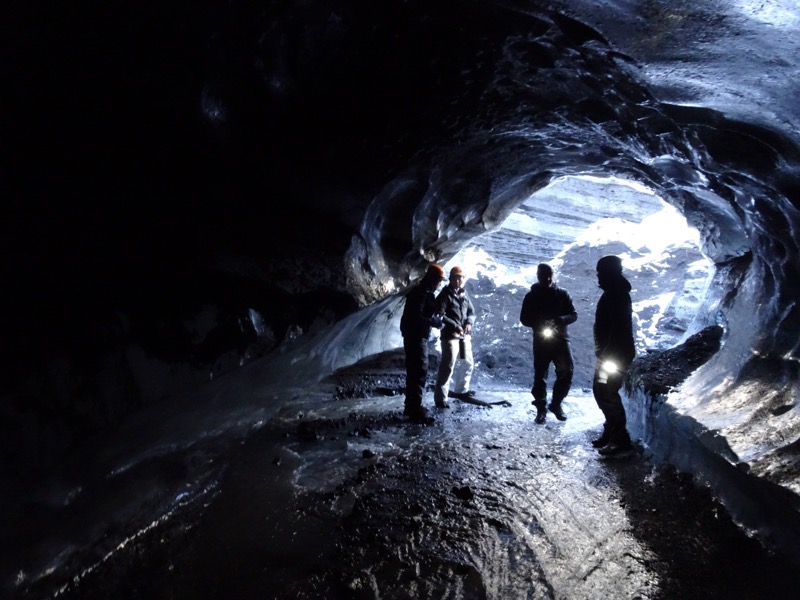 These ice caves are among the most extraordinary and mesmerizing wonders of nature. They are some of the most breath-taking sights I have ever experienced and this is just a little taste of what the ice caves offer – some of the most impressive ice caves you can visit in Iceland are not open until the full winter season due to their unpredictability. Just a few weeks ago, the ice cave known as the Crystal Cathedral (a large underground ice cavern) collapsed under the weight of the moving ice.
These ice caves are among the most extraordinary and mesmerizing wonders of nature. They are some of the most breath-taking sights I have ever experienced and this is just a little taste of what the ice caves offer – some of the most impressive ice caves you can visit in Iceland are not open until the full winter season due to their unpredictability. Just a few weeks ago, the ice cave known as the Crystal Cathedral (a large underground ice cavern) collapsed under the weight of the moving ice. 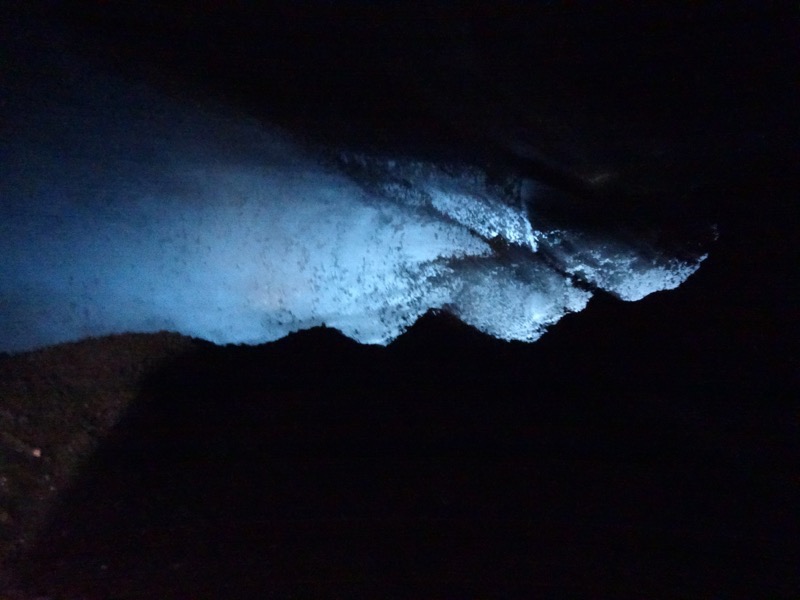 We are literally standing inside a glacier, it’s all around us. It feels really solid and safe, but in the back of your mind is the fact that glaciers are moving natural phenomena, all around us the ice is slowly moving and creaking its way down the mountainside.. which in this case is an enormous live volcano.
We are literally standing inside a glacier, it’s all around us. It feels really solid and safe, but in the back of your mind is the fact that glaciers are moving natural phenomena, all around us the ice is slowly moving and creaking its way down the mountainside.. which in this case is an enormous live volcano.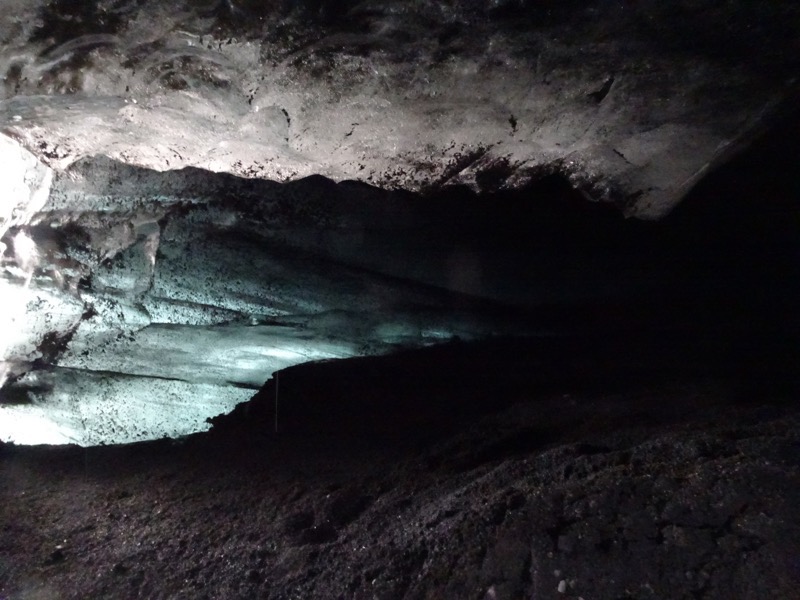
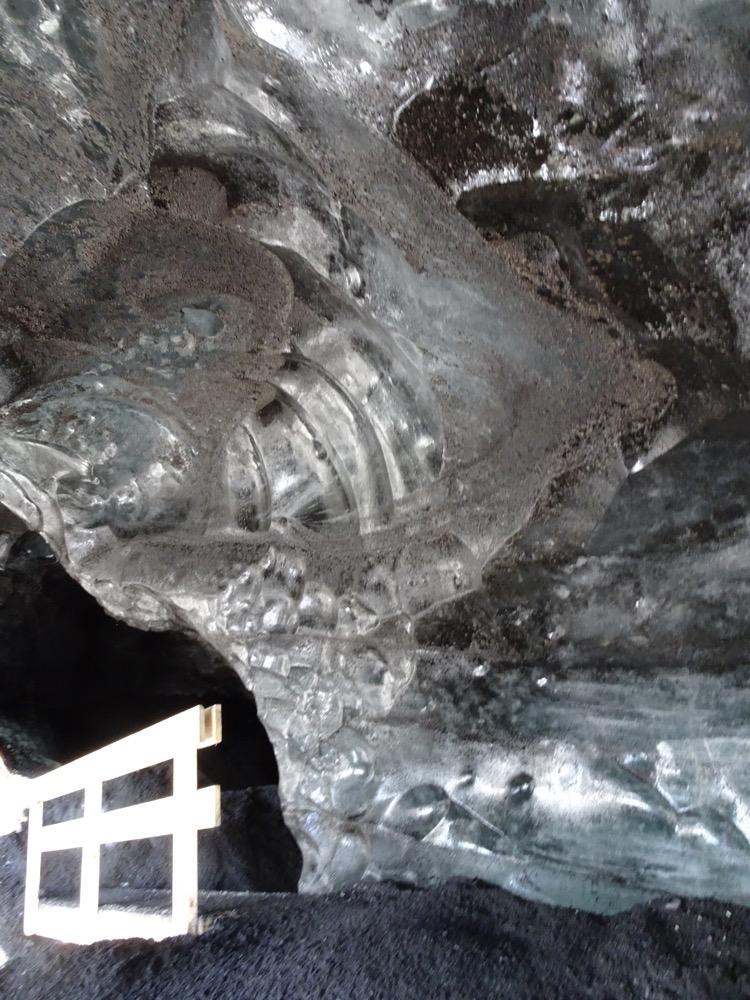
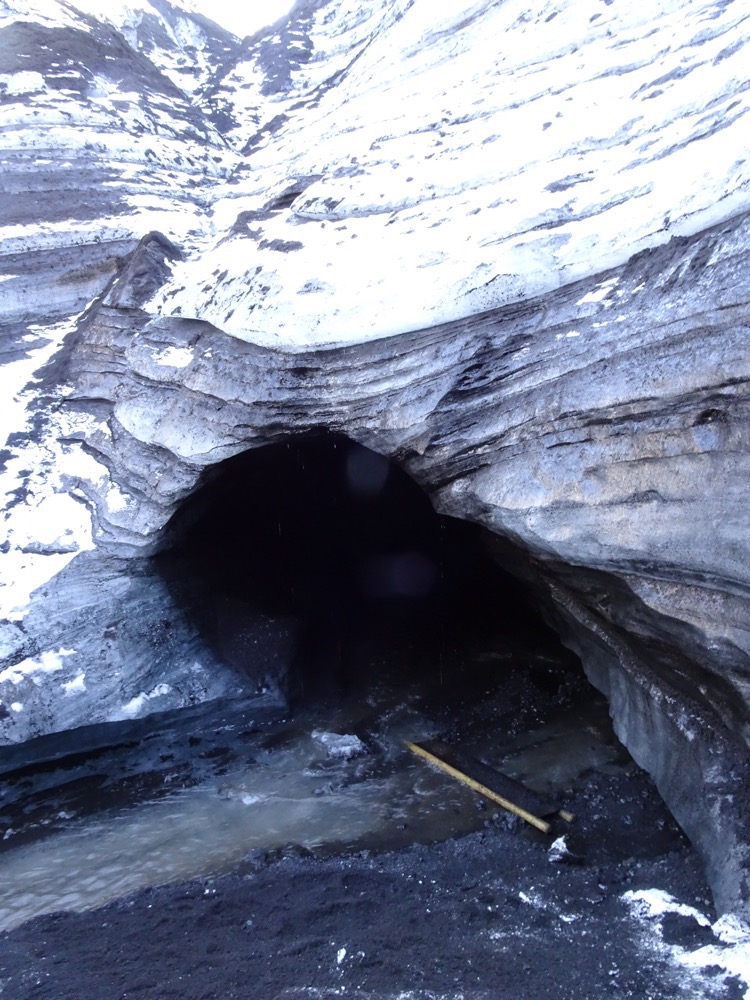


 The ice walls covered in volcanic ash make for a very dramatic backdrop.
The ice walls covered in volcanic ash make for a very dramatic backdrop. Stefan, our guide who repeatedly claimed it was his first day with a drivers license and then continued to drive that monster truck like a maniac for our (and possibly his) amusement, explains to some American tourists that Katla is overdue to erupt and when this happens, ‘All Iceland is probably fucked.’
Stefan, our guide who repeatedly claimed it was his first day with a drivers license and then continued to drive that monster truck like a maniac for our (and possibly his) amusement, explains to some American tourists that Katla is overdue to erupt and when this happens, ‘All Iceland is probably fucked.’
I can’t get over these images – this place is truly special.

After our stunning visit to the Mýrdalsjökull ice caves (even after being here I am no closer to being able to pronounce that properly) we entrusted ourselves back into Stefan’s hands for the race back to Vik… and race he did, except for the moments he was cracking donuts out on the lava field showing us that the monster truck won’t tip, or the bits where he was tearing up lava dunes so steep all you could see out the windscreen was sky.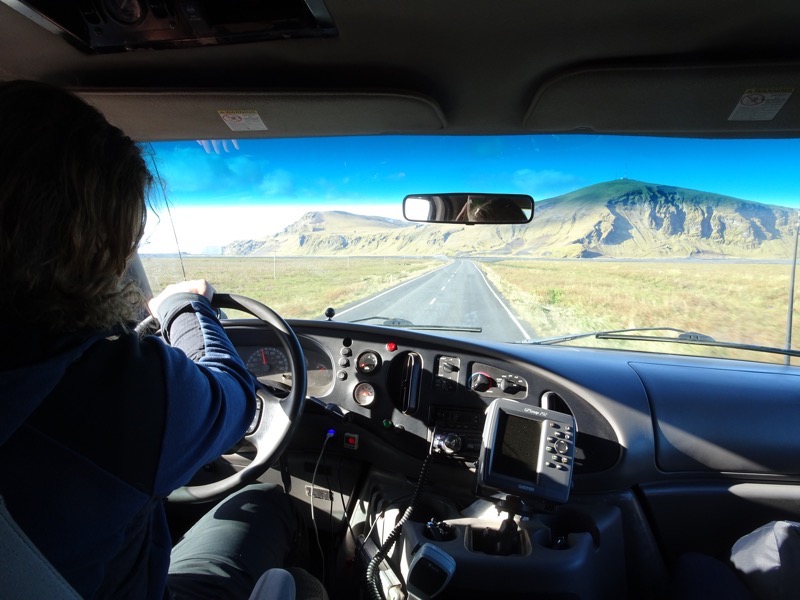
After our tour, we were back on the road heading northeast. The Hringvegur road (the main ring road around the island) is quite challenging. Maximum speed is 90kmph, though there are many, many bridges which are one lane only and people are required to slow to 50kmph and give way to any vehicles already crossing the bridge. The larger challenge though comes from people darting off the road trying to find vantage points to take photographs when the road literally has no shoulder to it. The next part of today’s adventure was taking us to Vatnajökull National Park to see the famous Svartifoss waterfall. Svartifoss (literally, black waterfall) is part of the Skaftafell wilderness area in Vatnajökull. It is surrounded by dark lava columns made of basalt similar to those that are seen at places like Giant’s Causeway in Northern Ireland, the Devil’s Tower in Wyoming and the Island of Staffa and Fingal Caves in Scotland. There are also similar basalt column formations on Reynisdrangar beach which we visited yesterday.
The next part of today’s adventure was taking us to Vatnajökull National Park to see the famous Svartifoss waterfall. Svartifoss (literally, black waterfall) is part of the Skaftafell wilderness area in Vatnajökull. It is surrounded by dark lava columns made of basalt similar to those that are seen at places like Giant’s Causeway in Northern Ireland, the Devil’s Tower in Wyoming and the Island of Staffa and Fingal Caves in Scotland. There are also similar basalt column formations on Reynisdrangar beach which we visited yesterday.
So we get to the National Park and check out the Visitor’s Centre – I was saying yesterday that many of the places of interest around Iceland seem to be connecting the dots on the Route 1, Hringvegur Road… this one not so much. We had a look at the map and noted that to get to the waterfall there was a 1.8km walk of which one part of the map was marked ‘mountainous’ close to the waterfall… I kinda failed to notice how close together the contour lines were for the entire first half of the walk. Much to my detriment. I took these photos on the way back – on the way there I was using all my energy to focus on keeping my head down (it reduces the clicking and grinding feelings that I get in my neck when going up inclines and steps) and reminding myself not to hold my breath.
I took these photos on the way back – on the way there I was using all my energy to focus on keeping my head down (it reduces the clicking and grinding feelings that I get in my neck when going up inclines and steps) and reminding myself not to hold my breath. 
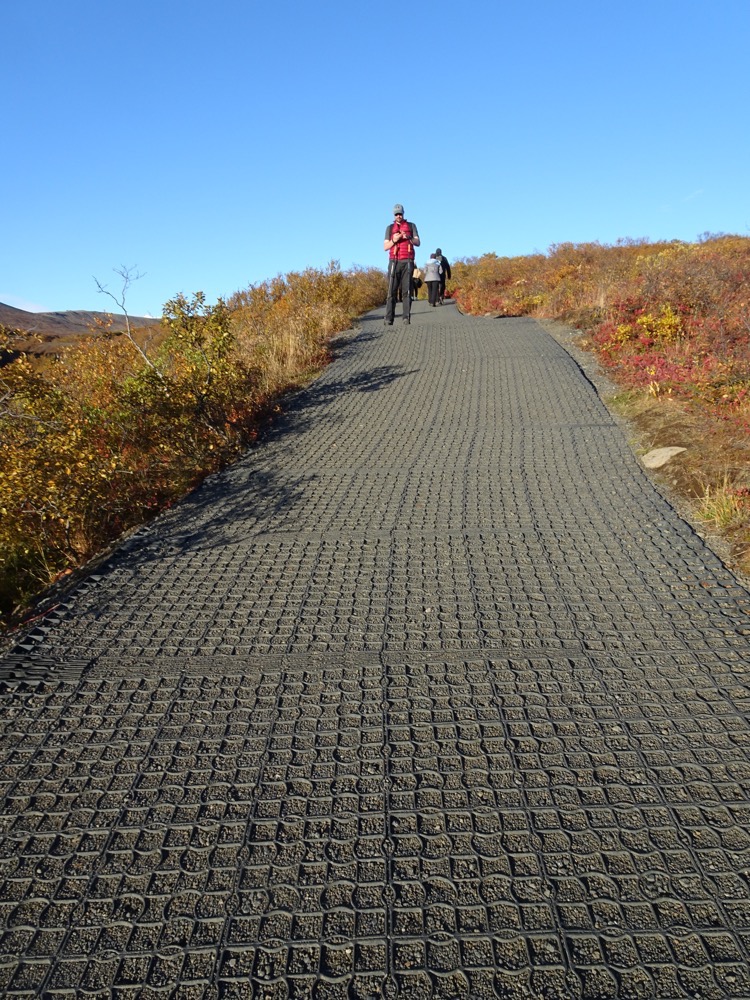 Many of you probably already know that I am a chronic pain sufferer and I kinda anticipated the energy required to do the ice-caving walk and planned to walk around a glacier lake this afternoon, but this ‘hike’, I had not anticipated. Which meant from about 200m in, it was a struggle. I was ramping up my neck/back pain, my Kyoto knee was not happy with me (I stepped oddly off a bus in Kyoto in 2015 and did something weird to my knee and its never forgiven me), I literally stopped about six times because I was going to throw up – not because I am unfit, though I am, but because the clicking and grinding in my neck drags against my oesophagus causing a gag reflex to induce feelings of impending vomiting. Yes, me and steep slopes/steps simply do not mix and have not since 2007. The other big problem with pain is fighting the urge to hold your breath – you know that thing you do when you kick your toe hard into a piece of furniture and you go ‘Shit!’ and then hop around holding your breath until the pain subsides to stop yourself from exclaiming more? Yeah that. When my pain levels are amped right up to 11, I have a tendency to hold my breath, which is not ideal when hiking unless passing out is your goal.
Many of you probably already know that I am a chronic pain sufferer and I kinda anticipated the energy required to do the ice-caving walk and planned to walk around a glacier lake this afternoon, but this ‘hike’, I had not anticipated. Which meant from about 200m in, it was a struggle. I was ramping up my neck/back pain, my Kyoto knee was not happy with me (I stepped oddly off a bus in Kyoto in 2015 and did something weird to my knee and its never forgiven me), I literally stopped about six times because I was going to throw up – not because I am unfit, though I am, but because the clicking and grinding in my neck drags against my oesophagus causing a gag reflex to induce feelings of impending vomiting. Yes, me and steep slopes/steps simply do not mix and have not since 2007. The other big problem with pain is fighting the urge to hold your breath – you know that thing you do when you kick your toe hard into a piece of furniture and you go ‘Shit!’ and then hop around holding your breath until the pain subsides to stop yourself from exclaiming more? Yeah that. When my pain levels are amped right up to 11, I have a tendency to hold my breath, which is not ideal when hiking unless passing out is your goal.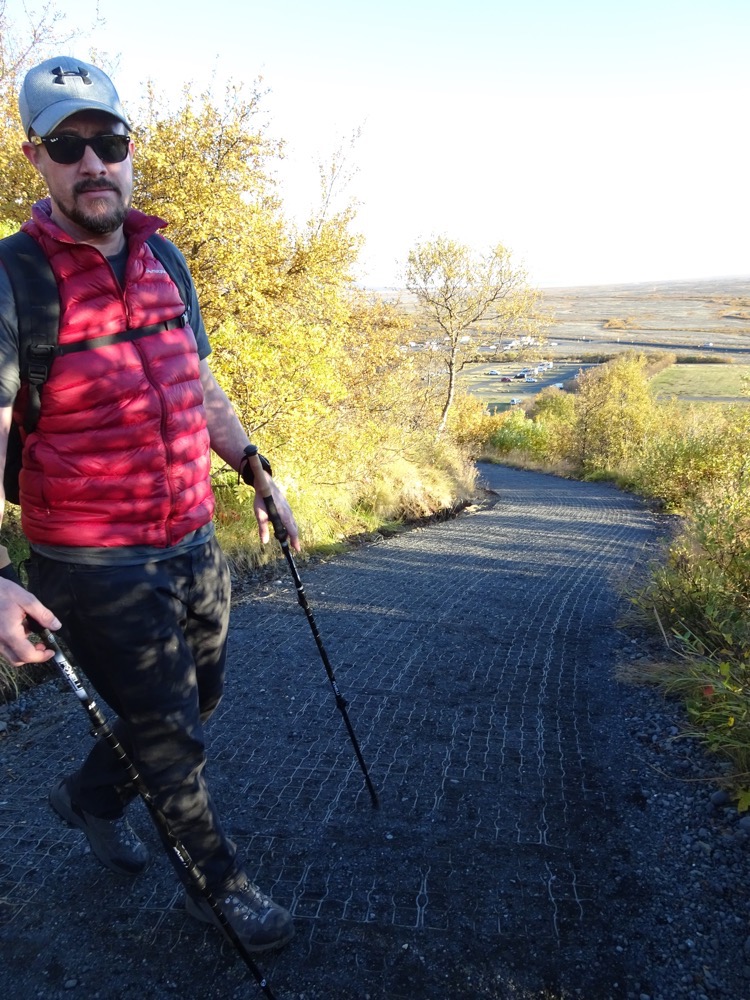 I looked at these paths on the way back and simply could not believe I walked up them. They were very steep and about 1.2km of the 1.8km walk was all like this. Eventually, we got to a viewing platform where we could see the falls in the distance and I could also see the track in front of me – straight down for about 300m. I looked at it and thought I can not go down there because I have to come back up. But after a few minutes rest and some water to get the peristalsis moving back in a downwards direction, I got to the ‘Fuck it, I’ve come this far, I’m not missing out on seeing this damn waterfall.’
I looked at these paths on the way back and simply could not believe I walked up them. They were very steep and about 1.2km of the 1.8km walk was all like this. Eventually, we got to a viewing platform where we could see the falls in the distance and I could also see the track in front of me – straight down for about 300m. I looked at it and thought I can not go down there because I have to come back up. But after a few minutes rest and some water to get the peristalsis moving back in a downwards direction, I got to the ‘Fuck it, I’ve come this far, I’m not missing out on seeing this damn waterfall.’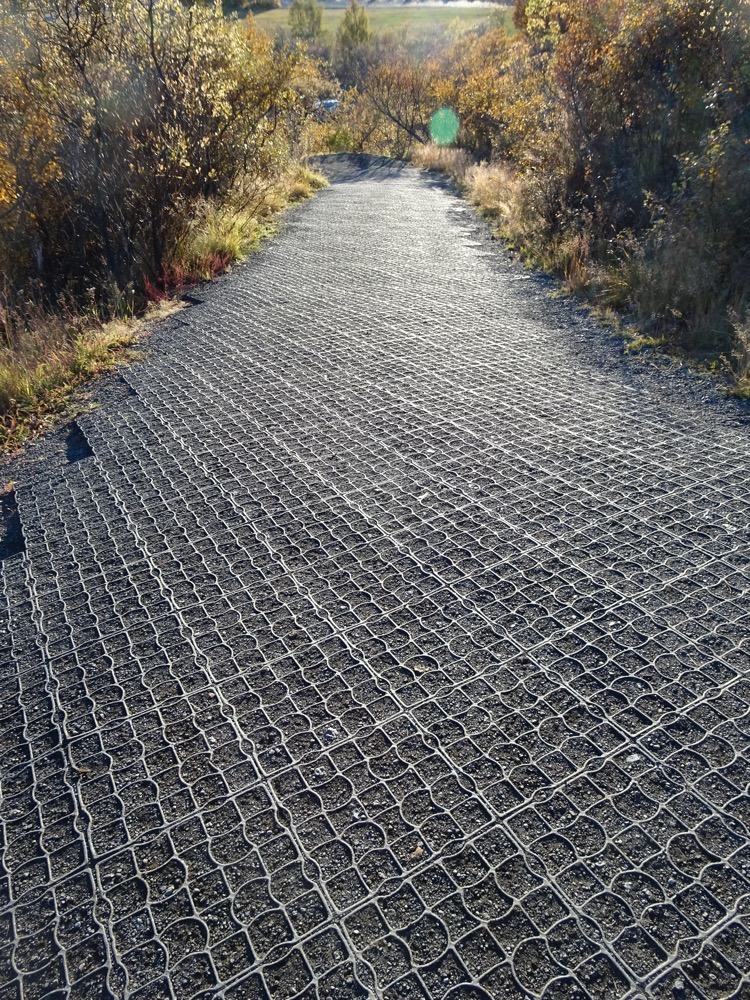 So, after basically getting there on pure pigheadedness, I managed to see the Svartifoss waterfall.
So, after basically getting there on pure pigheadedness, I managed to see the Svartifoss waterfall.
 It really is a unique natural formation with the tall black basalt columns and the broken pieces of columns all scattered around below the falls. It was late afternoon, so the light could have been better but still, just beautiful.
It really is a unique natural formation with the tall black basalt columns and the broken pieces of columns all scattered around below the falls. It was late afternoon, so the light could have been better but still, just beautiful.


yale looking wistfully out over the landscape on the way back to the visitor’s centre. Okay, may be wistful, may be, ‘Hurry up and take your damn picture, woman.’
 After I hobbled back to the car (and yes, hobbling was seen as my back was just screaming at me and all the drugs were in the car), we then continued our journey towards Höfn and at every turn, we were marvelling at the scenery. You literally drive another five minutes and are greeted with completely different landscapes. It’s incredible. The impulse to keep taking photographs is overwhelming and the ever-changing landscape boggles the mind wiith its diversity.
After I hobbled back to the car (and yes, hobbling was seen as my back was just screaming at me and all the drugs were in the car), we then continued our journey towards Höfn and at every turn, we were marvelling at the scenery. You literally drive another five minutes and are greeted with completely different landscapes. It’s incredible. The impulse to keep taking photographs is overwhelming and the ever-changing landscape boggles the mind wiith its diversity.



 I’m in the car as we drive along, queuing up some 80s tunes to try and take my mind off the ill-advised hike to the waterfall. We were heading toHöfn for the evening and on the way is the Jökulsárlón glacier lake (Jökulsárlón literally means, ‘glacial river lagoon’) which is on the edge of Vatnajökull National Park. The lagoon has formed at the base of the Breiðamerkurjökull glacier which used to just spill into the Atlantic, but developed into a lake as the glacier has receded from the sea, as glaciers are wont to do. This is the stunning result of this incredibly unusual naturally formed glacial lagoon:
I’m in the car as we drive along, queuing up some 80s tunes to try and take my mind off the ill-advised hike to the waterfall. We were heading toHöfn for the evening and on the way is the Jökulsárlón glacier lake (Jökulsárlón literally means, ‘glacial river lagoon’) which is on the edge of Vatnajökull National Park. The lagoon has formed at the base of the Breiðamerkurjökull glacier which used to just spill into the Atlantic, but developed into a lake as the glacier has receded from the sea, as glaciers are wont to do. This is the stunning result of this incredibly unusual naturally formed glacial lagoon:
 The lake is constantly changing size and shape depending on the varying melting rate of the glacier. Currently, the lake is about 1.5 km from the ocean and is about 18 km2 in size. In 2009 it was surveyed and is reportedly the deepest lake in Iceland, at over 248m deep! As the glacier continues to retreat the size of the lake continues to increase and has quadrupled in size since the 1970s.
The lake is constantly changing size and shape depending on the varying melting rate of the glacier. Currently, the lake is about 1.5 km from the ocean and is about 18 km2 in size. In 2009 it was surveyed and is reportedly the deepest lake in Iceland, at over 248m deep! As the glacier continues to retreat the size of the lake continues to increase and has quadrupled in size since the 1970s.  I haven’t included it in any of these photos, but on the other side of the lake, there are small buildings that house the many tour operators that you can book through to go out in a zodiac and explore the lake, its icebergs and wildlife (mostly birds and seals). I discovered fairly quickly that the buildings immediately gave you a frame of reference for the size of everything – from the size of the glacier face to the distances across the lake, to the estimated size of the icebergs.
I haven’t included it in any of these photos, but on the other side of the lake, there are small buildings that house the many tour operators that you can book through to go out in a zodiac and explore the lake, its icebergs and wildlife (mostly birds and seals). I discovered fairly quickly that the buildings immediately gave you a frame of reference for the size of everything – from the size of the glacier face to the distances across the lake, to the estimated size of the icebergs.
 One of the weirdnesses of Antarctica was the impossibility of trying to estimate the distances to a glacier or the approximate size of an iceberg… you’d think something is only 500m away, and then you’d move towards it in the zodiac and keep going and keep going and it would get larger and larger and yet you still wouldn’t reach it. Without any trees, vehicles, buildings or people – Antarctica is without perspective. The buildings across the lake helped you immediately lock in how large the lake and the icebergs in it, were.
One of the weirdnesses of Antarctica was the impossibility of trying to estimate the distances to a glacier or the approximate size of an iceberg… you’d think something is only 500m away, and then you’d move towards it in the zodiac and keep going and keep going and it would get larger and larger and yet you still wouldn’t reach it. Without any trees, vehicles, buildings or people – Antarctica is without perspective. The buildings across the lake helped you immediately lock in how large the lake and the icebergs in it, were.
 I am pleasantly surprised to see that I can still be amazed at the size and beauty of the icebergs – in spite of having seen many of them in both Alaska and Antarctica. Maybe I am not as travel weary and jaded as I think I am – mind you, it probably really helped that there were no hordes of other tourists here while I was admiring their beauty and enjoying the serenity…
I am pleasantly surprised to see that I can still be amazed at the size and beauty of the icebergs – in spite of having seen many of them in both Alaska and Antarctica. Maybe I am not as travel weary and jaded as I think I am – mind you, it probably really helped that there were no hordes of other tourists here while I was admiring their beauty and enjoying the serenity… Iceland Tourism considers Lake Jökulsárlón to be one natural wonders of Iceland – gotta say, they won’t get any argument from us!
Iceland Tourism considers Lake Jökulsárlón to be one natural wonders of Iceland – gotta say, they won’t get any argument from us!
 It was early evening by the time we left the glacier lake, and totally dark by the time we arrived in Höfn. As we checked into the House On The Hill Guesthouse, I was elated by the beautiful places I had seen today but also completely regretful of my ridiculous stubborn streak that saw me march into Svartifoss like a healthy person. I am in so much pain I can’t describe it. Tomorrow is going to be a real struggle… I hope I get some decent sleep tonight.
It was early evening by the time we left the glacier lake, and totally dark by the time we arrived in Höfn. As we checked into the House On The Hill Guesthouse, I was elated by the beautiful places I had seen today but also completely regretful of my ridiculous stubborn streak that saw me march into Svartifoss like a healthy person. I am in so much pain I can’t describe it. Tomorrow is going to be a real struggle… I hope I get some decent sleep tonight.

Thanks for sharing these fantastic images! After our Golden Circle tour (while on the Sea Princess) I left thinking that Iceland would have to be one of the most beautiful countries in the world. Sorry about the pain you are going through to capture these impressive shots.
Hi Laura,
I was on the Sea Princess this year just doing the Southampton to New York sector and also did a Golden Circle tour. This is my third time in Iceland and I’m here for nearly two weeks. Hoping to see as much as I can this time. 🙂